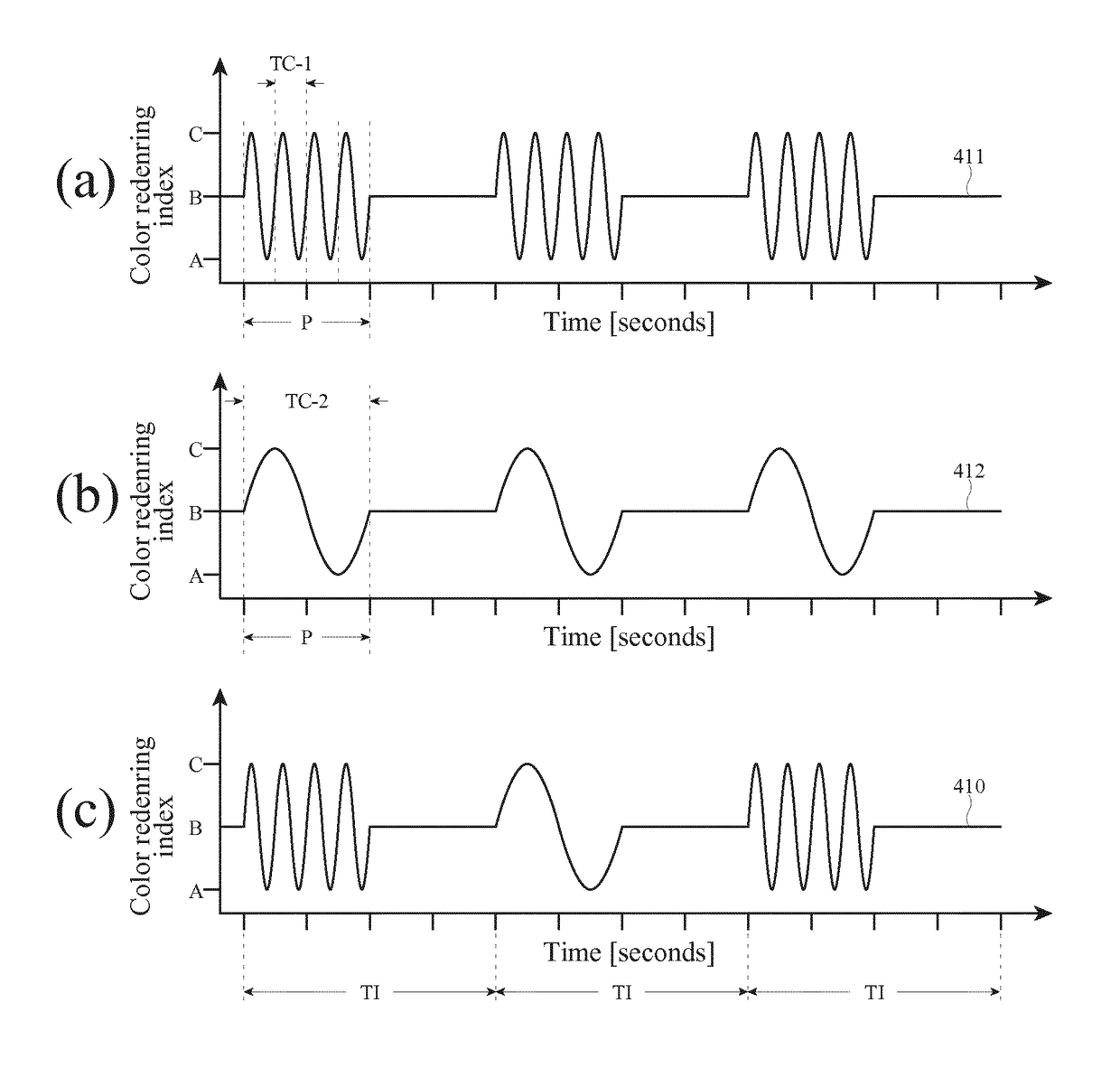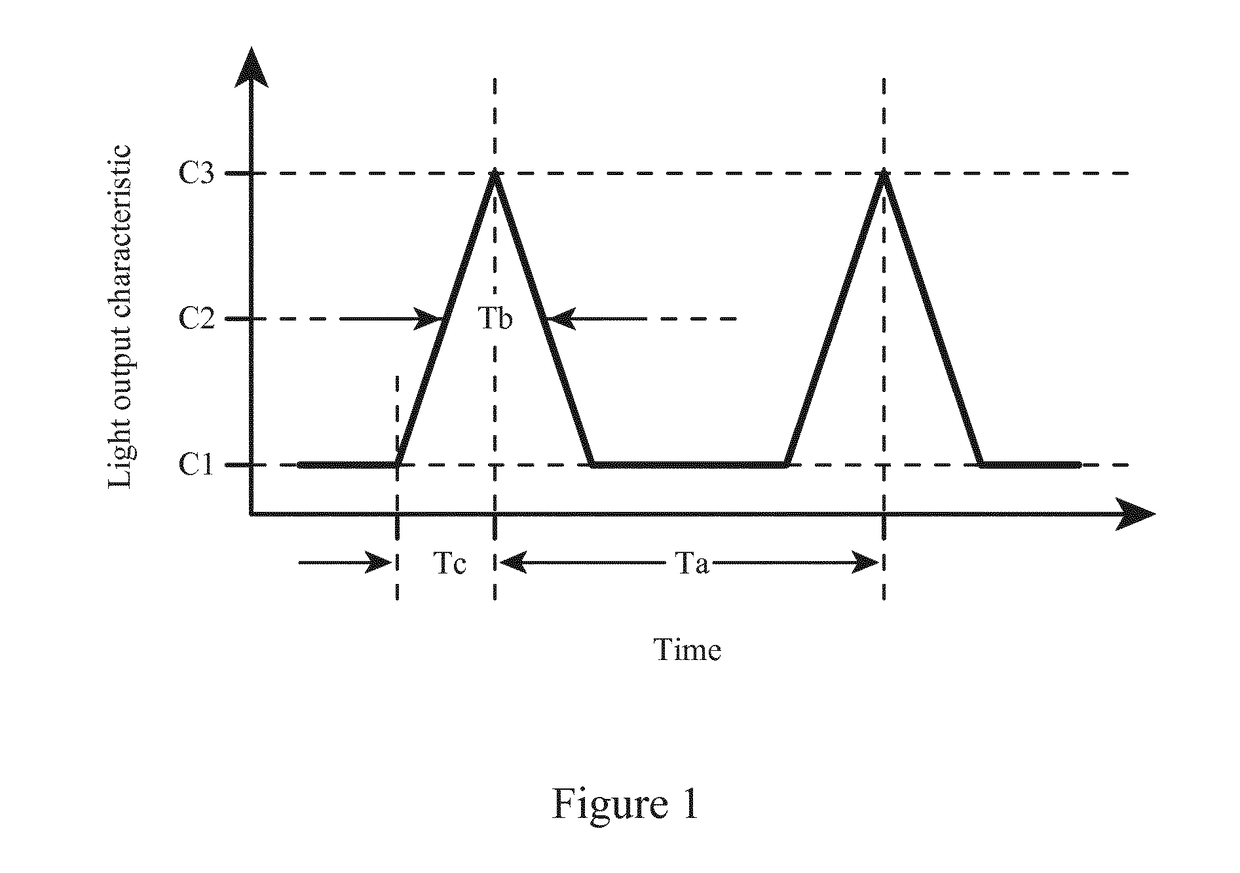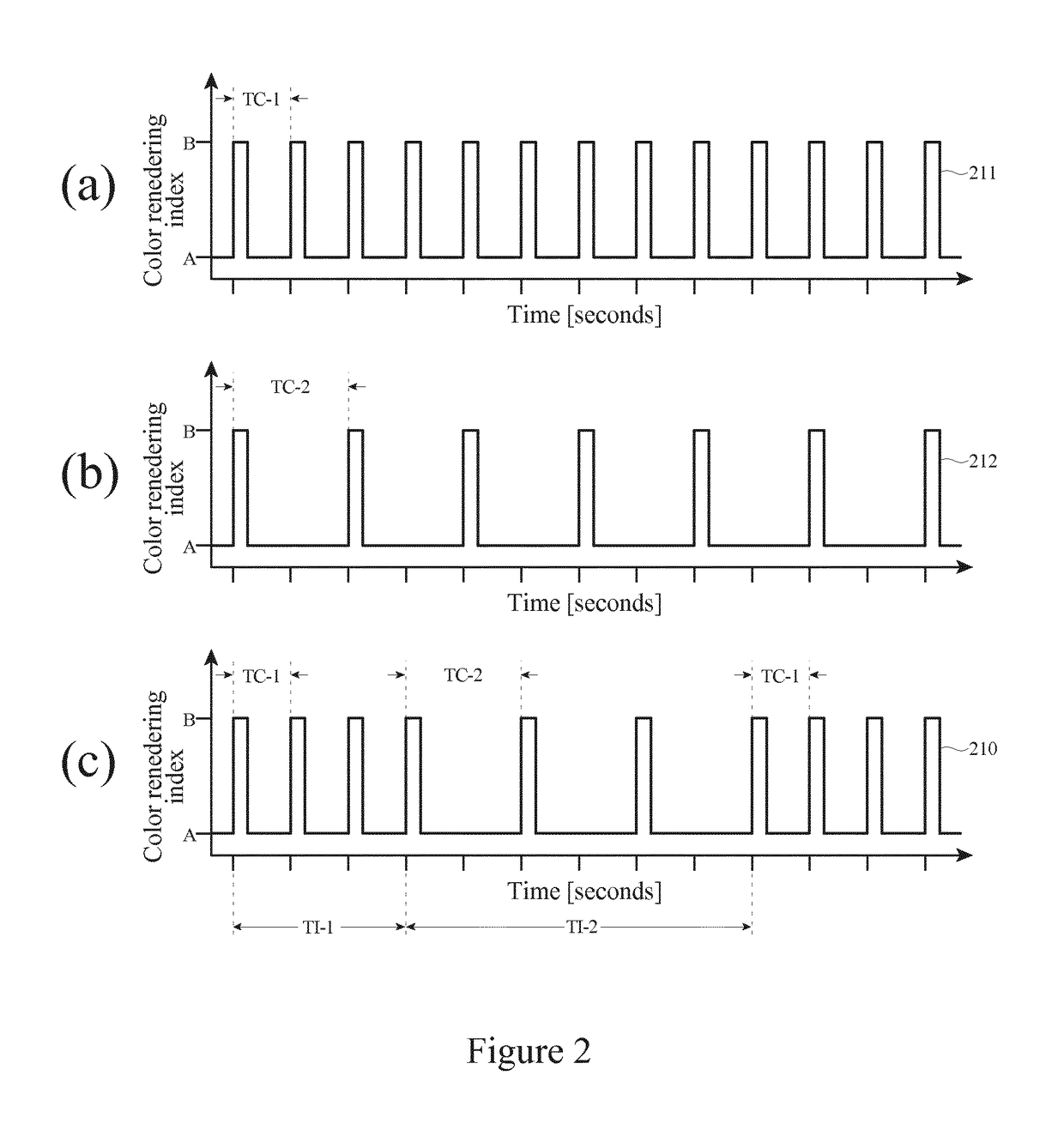Lighting device
a technology of light source and light source, which is applied in the direction of illuminated signs, instruments, display means, etc., can solve the problems of reducing the attractiveness of the target object, affecting the overall effect, and affecting so as to optimize the overall effect and improve the effect of the light sour
- Summary
- Abstract
- Description
- Claims
- Application Information
AI Technical Summary
Benefits of technology
Problems solved by technology
Method used
Image
Examples
Embodiment Construction
[0042]FIG. 1 illustrates several different examples of time constants that can each be used to characterize the waveforms of the first and second light output components. The examples shown are the time between subsequent pulses (Ta), the pulse width at half maximum (Tb), and the amount of change per time unit ([C3−C1] / Tc).
[0043]For an embodiment of the lighting device according to the present invention, FIG. 2 shows the time-dependent light output of the first light output component (see FIG. 2(a)), the second light output component (see FIG. 2(b)), and the primary light output (see FIG. 2(c)).
[0044]In this embodiment the primary light output characteristic is the color rendering index, which varies over time for the first light output component according to the first waveform 211, and for the second light output component according to the second waveform 212. The first waveform 211 and the second waveform 212 are both pulsed waves consisting of a sequence of pulses, wherein each p...
PUM
 Login to View More
Login to View More Abstract
Description
Claims
Application Information
 Login to View More
Login to View More - R&D
- Intellectual Property
- Life Sciences
- Materials
- Tech Scout
- Unparalleled Data Quality
- Higher Quality Content
- 60% Fewer Hallucinations
Browse by: Latest US Patents, China's latest patents, Technical Efficacy Thesaurus, Application Domain, Technology Topic, Popular Technical Reports.
© 2025 PatSnap. All rights reserved.Legal|Privacy policy|Modern Slavery Act Transparency Statement|Sitemap|About US| Contact US: help@patsnap.com



